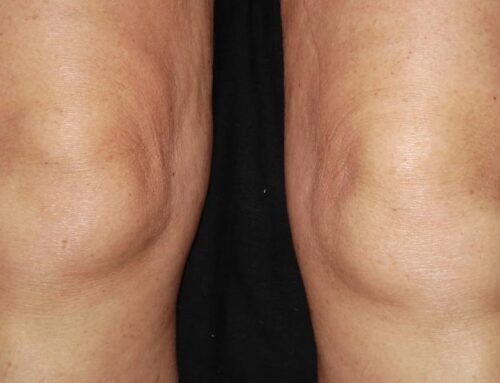The term “cracking” when referring to neck cracking is the popping sound that occurs when quick motions loosen the joint and ligaments in the neck. Any joint can be “cracked,” and it is common for people to also crack their knuckles, lower back, hips, ankles, and toes. People often do this themselves, although it can also be done by a professional. In general, in the case of neck cracking, the professional who performs this maneuver would be a chiropractor.
In this article, we take a look at when neck cracking might occur, what the risks might be, and why chiropractors might do it.
Why does neck cracking happen?
There are three key reasons why joints, and specifically the neck, will crack:
Escaping gas
There is fluid in the joints that helps the bones and tissue to move together smoothly. This fluid contains oxygen, nitrogen, and carbon dioxide.
In the neck, there are paired joints, known as facet joints, that run up and down each side. Each of these facet joints has a capsule around it that is filled with fluid and gas.
When the joint capsule is stretched, gas is rapidly released in the form of bubbles. This release of gas makes a popping or cracking sound.
The process is also referred to as “boiling” or “cavitation.”
Movement
When a joint moves, it also affects the tendons and ligaments, which are the fibers connecting the bones and muscles in the joint.
If a tendon moves slightly out of place, it can make a snapping noise when it returns to its original position.
Similarly, the ligaments can tighten when the joint is moved and can make a cracking sound. This will often occur in the ankle or knee.
Arthritis
If a joint is affected by arthritis, the cartilage can lose its smoothness. As the joint surface becomes rougher, it can make a noise when it moves.
When to see a doctor

A person is normally advised not to try and crack their neck themselves if they are experiencing pain or problems with this part of their body. This is because there are nerves and blood vessels that run through the neck that can be damaged if cracking is not done properly. Gentle stretching is advised instead, as a home treatment.
If someone is experiencing pain or a lack of mobility in their neck, they are advised to go to a doctor to seek treatment.
Any pain, numbness in limbs, or loss of strength experienced by neck cracking should be assessed by a medical professional as well. Doctors will often recommend chiropractic care or referral to an orthopedic surgeon.
The chiropractor will examine the person to try and work out what is causing the problem. They will then try and restore normal body movement through gentle manipulation techniques.
Risks and possible complications
The practice of neck cracking is a common method used by chiropractors. The process is known as cervical spine manipulation. Some chiropractors believe that it is not high-riskTrusted Source and the rate of injury caused by it is very low.
However, there are risks and side effects associated with it. Some chiropractors believe that these risks Trusted Sourceoutweigh the possible benefits of neck cracking.
Stroke
Although cases are rareTrusted Source, neck cracking can tear the vertebral artery, which supplies blood to the brain. This tear can cause a stroke.
Individuals who have a habit of neck cracking are more prone to having a stroke. This is particularly common in those under the age of 60.
Blood clotting
Neck cracking has caused some cases of blood clotting in the neck. This is very dangerous because it can stop the oxygen supply to the brain.
Osteoarthritis
Cracking the neck puts pressure on the joints. When this is done a lot, it can lead to instability in the neck and, in turn, to osteoarthritis, a condition where the tissue at the ends of bones becomes weaker.
Osteoarthritis is a painful and irreversible condition.
Lack of mobility
Each time the neck is cracked, it can cause damage to the connective tissue in the spine. Over time, this can reduce mobility and may lead to arthritis.
Risk factors

Age may play a part in the risk of complications from neck cracking.
Young people have greater muscle, ligament, and bone strength than older people. As a result, neck cracking is relatively safe for them. As people get older, their blood vessels get harder. This causes a greater risk of artery bursting.
Bones may also be more likely to fracture in older people from a quick, forceful motion.
Is there any benefit to neck cracking?
Cracking the neck to relieve pain is a commonly used practice by chiropractors.
While there are risks of a vascular injury, fracture, or nerve damage, the chances of it happening are low. The risk is lowest in people who have healthy bones, ligaments, and muscles.
Neck manipulation, which can often lead to cracking, through massage and stretching of the soft tissue, has been shown to correct the positioning of the spine, and to relieve pain.
Those in favorTrusted Source of the process say that it is more effective than other treatments, such as exercising the muscles that support the spine.
Problems that cervical neck manipulation from a chiropractor has been shown to help, include:
It is important to remember that, if someone chooses this treatment, only a qualified chiropractor should carry out the manipulation.
Those experiencing neck pain or lack of mobility in their neck could also think about trying some other methods or lifestyle changes, such as:
- professional massage
- over-the-counter pain medication
- a firmer mattress or new sleeping position
- neck stretching and strengthening exercises
- putting ice or heat on the painful area
- not carrying heavy shoulder bags or backpacks



